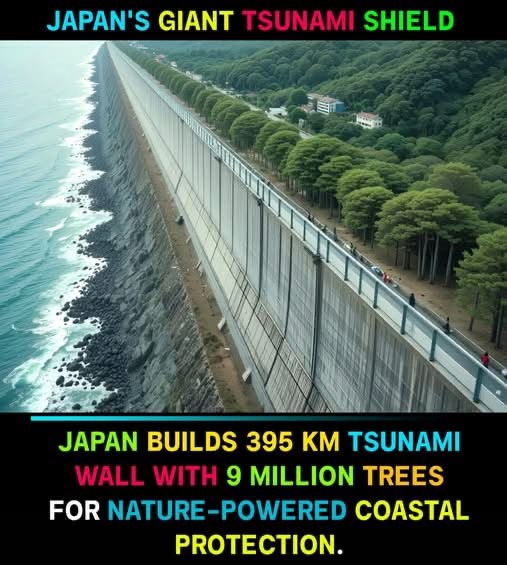
After the devastating 2011 Tōhoku tsunami, Japan did more than rebuild—it went into fortress mode.
Stretching an astonishing 395 kilometers, the Great Tsunami Wall is one of the largest disaster-defense systems on Earth. In some areas, it rises 14.7 meters tall—taller than a four-story building—with foundations plunging 25 meters deep to resist the ocean’s fury.
Concrete Meets Nature
Japan’s defense didn’t stop with concrete. Along the coastline, 9 million trees have been planted to create the “Great Forest Wall.”
This living barrier serves a double purpose:
Slowing waves before they hit inland. Trapping debris so it isn’t dragged back into the sea.
It’s a rare blend of engineering muscle and natural resilience, showing how human innovation and Mother Nature can work together.
A Bold Lesson for the World
The Great Tsunami Wall and Forest stand as symbols of Japan’s determination after tragedy. They aren’t just walls of steel and roots—they are a promise that the nation will never again be caught unprepared.
🌍✨ A reminder that when humans combine technology and nature, even the fiercest disasters can be met with hope and strength.
- When you blush, your stomach turns red along with your face.??
- Why Do We Forget 90% of Our Dreams? (And How to Remember Them)
- Did You Know…Women’s Hearts Beat Faster Than Men’s!
- That fact is true! 🦷💧On average, a healthy human mouth produces about 1 to 1.5 liters of saliva every single day.
- The amazing brayyyy TV movie jpncode : JUR-354artist : MEGURI FUJIURA